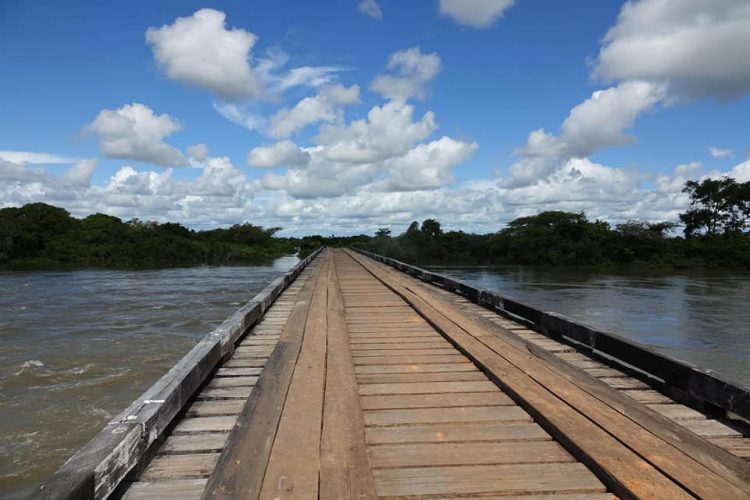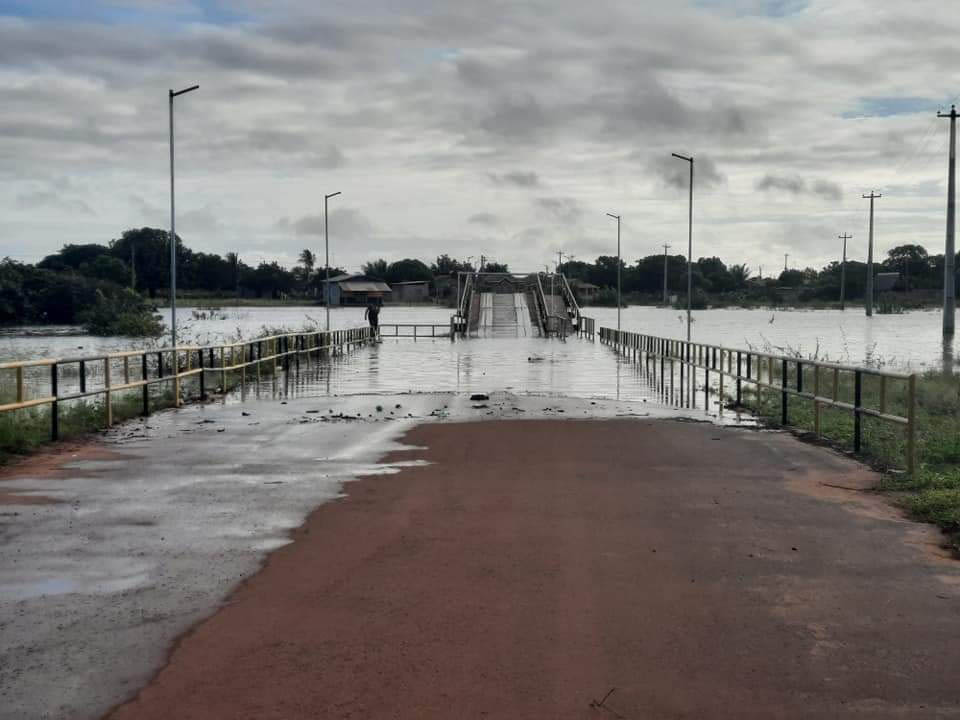Seasonal flooding is not unusual in the Rupununi but the COVID-19 pandemic has added a new layer of complication as cases continue to rise in Indigenous communities.
At first, residents thought it was just the cold or flu; after all, such viral infections are common during the beginning of the wet season. “Nothing was thought of it,” said Michael Thomas, the Toshao of Aishalton and Vice Chairman of the South Rupununi District Council (SRDC). Having recently managed to curb the spread of the COVID-19 virus in the community, residents did not expect another outbreak this soon but as of yesterday 13 new cases were confirmed sparking another potential outbreak in the community.
Based on reports he has received, Thomas said that two additional communities have reported cases of the virus. “We are very concerned that the COVID-19 will be mistaken for the flu or cold because this has already happened and that is how it seems to be transmitted more rapid because people are thinking that is just the flu and that is why we have so many new cases,” he said.

However, the Toshao has said they have been determined to address the issues and have since told residents to call their respective village councils if they have symptoms of the flu or cold. Thomas said those persons will then be told to isolate and a medical team will be dispatched to collect samples to be tested.
Thomas said that this has shown that if the wet season will have any impact on the present situation, it would be in an adverse way. He noted that they recently set up an isolation area at the Aishalton District Hospital to accommodate severe COVID-19 cases. An ambulance usually travels to the affected communities to transport these patients to the hospital but according to Thomas this will be a bit difficult now given the overtopping river and creeks.
“The flooding situation will be hindering persons from being transported to the hospital in a timely manner. We recently had really high water and vehicles could not have crossed to Karaudarnau,” he said. He added that when creeks in the area crest they usually drop within 48 hours but this can still be a major issue if a patient is in a critical condition.
Evacuated
In Lethem, the severity of the flooding has led to five families being evacuated from their homes and placed in temporary shelters. Separated from Brazil by only the Takutu River, residents and Region Nine officials have always feared that one of the more transmissible COVID-19 variants from the neighbouring country is circulating in Guyana.
Shelters were established at the Arapaima Primary School, Culvert City and Tabatinga nursery schools, and the Tabatinga sports complex building in Central Lethem. A health team will be stationed at each shelter to detect potential outbreaks of illnesses caused by mosquitoes and stagnant water and also, COVID-19.
A regional official commented, “at least now we don’t have to worry about illegal cross-border travelling” while noting that the ever-cresting Takutu River will make sure of that but added that it might be too late because it is clear that the cases are rising and are being transmitted at a fast rate. A new COVID-19 variant presence in Guyana is yet to be confirmed by the Ministry of Health.
There are currently 95 active cases in Region Nine. These are distributed among Masakenari, Parabara, Katoonarib, Sawariwau, Aishalton, Wichabai and Karaudarnau in the South Rupununi, Annai, Kwatamang, Aranaputa, Fairview and Rupertee in the North Rupununi and Lethem along with Quiko in the Central Rupununi.
According to the regional official, before the flooding only the South Rupununi was severely affected but since the wet season began, there has been a rapid increase across every village. Noting that it is only the beginning of the wet season, the officials said that the fact that there is already a need for temporary shelters is sign that there can be a more deadly COVID-19 outbreak if not managed well.
Torrential rainfall and trans-boundary flooding associated with the increase in water levels of the River Branco in Roraima State, have left communities, farmlands and roadways in the Rupununi inundated. Lethem which is located close to the Takutu River is also affected. Like Region Nine, Brazil is also battling its own version of this double disaster.
Relief supplies
With more than 90 households affected by flooding in Region Nine, the Civil Defence Com-mission (CDC) on Tuesday said that a truck filled with relief supplies has departed for the region. An update last night said that the truck will arrive today and distribution of relief supplies will commence. The distribution of potable water had commenced and the CDC reported that many houses are still inundated in the affected areas as rain continues to pour.
The Regional Democratic Council (RDC) has said that an assessment team consisting of representatives from the Guyana Defence Force, the Ministries of Health and Agriculture, among several others, will be dispatched across the region to evaluate the impact of the flooding. “The team will also work along with the Village Councils in assessing, monitoring and managing the impacts of the floods affecting farmers and residents,” the RDC stated.
Due to the road leading to St Ignatius being flooded, boats will also be available to shuttle commuters between St Ignatius Village and Lethem.
Regional Chairman Bryan Allicock said that food, potable water and sanitary supplies will be distributed to households affected by the floods. He is encouraging all residents across the Region to continue to take all precautionary measures against flooding, and follow all COVID-19 guidelines. When contacted Allicock said that assessments are still ongoing and the figure for those affected in central Rupununi is still ongoing. A total of 54 houses have been affected in Parabara and 34 in Bashaizon due to overtopping of the Kuyuwini and Takutu Rivers.
The CDC reported that a number of farms across the Region have been affected. Thomas confirmed this, saying that village councils are presently conducting assessments to figure out how many farms are affected in the Rupununi.
“Farmers are already complaining about their farms being under water and the cassava root is rotting very fast,” he said. He noted that the Indigenous Peoples are highly dependent on the cassava and it is their main staple. Many of these roots have been submerged and villagers have rushed to their farms to save whatever is salvageable.
He stated that with the wet season expected to last until August it wouldn’t be long before these supplies are depleted. “We don’t do large scale farming so whatever we manage to save and parch would not last until the end of the season,” he said.
Thomas said they have recorded the highest level of flooding this year because unlike previous years the Kabanaao Bridge in their community is currently submerged and water from the creek has reached miles out into the savannah. This, he says is common at the Rupununi River but this is the first time that many creeks have significantly overtopped.





